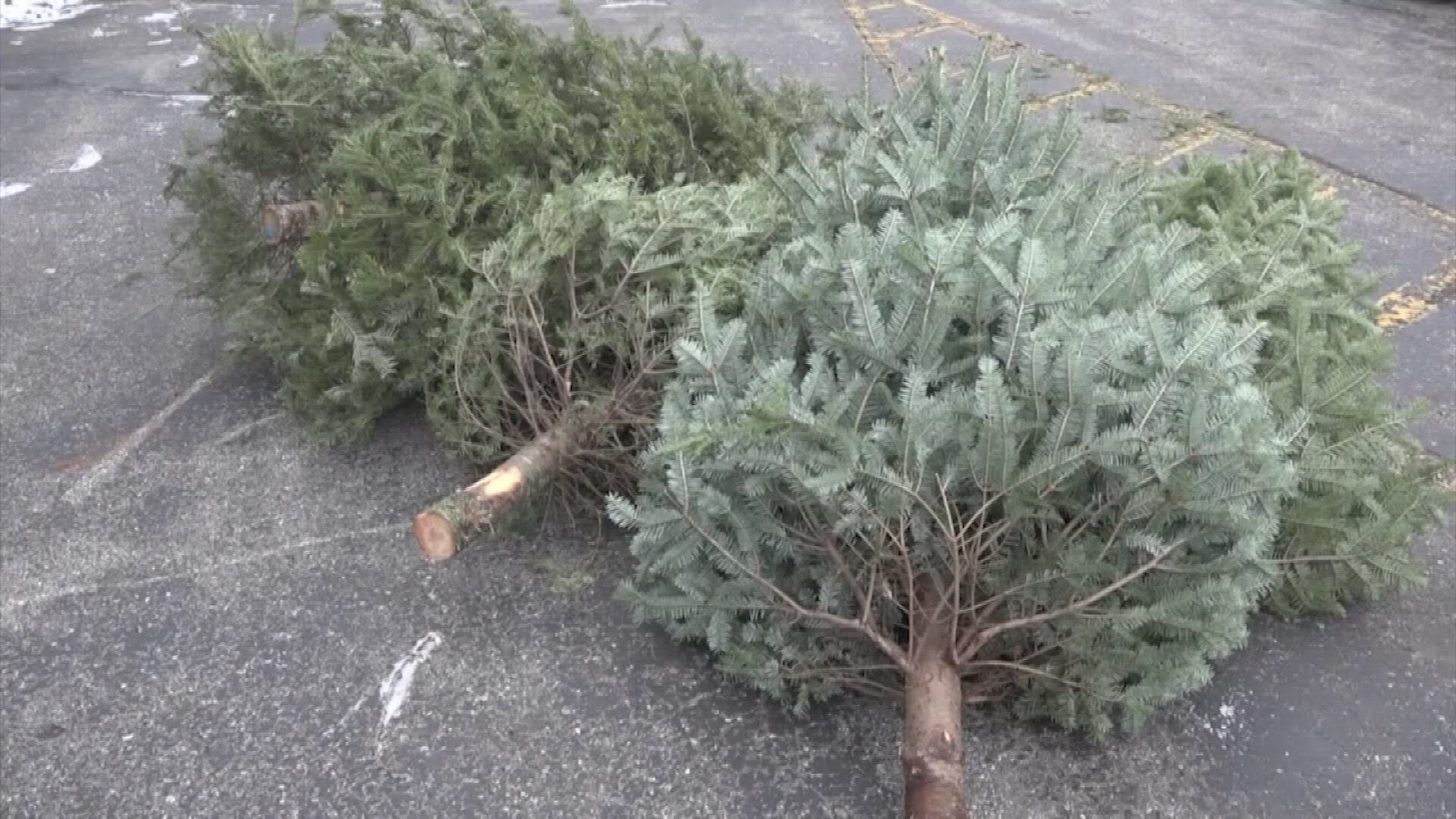PARMA, Ohio — Angela Presti couldn't wait to decorate her first real Christmas tree with her daughter.
She found the perfect one at a Northeast Ohio tree lot, brought it into the house and started decorating. Except a few hours later she noticed one side of her face was swollen. She wrote it off to TMJ and stress until it kept getting worse.
"My cheek was hot and itchy," she said.
Then she noticed her hands, feet and tongue were swollen, too.
"My tongue, I felt like I could swallow it, except I couldn't swallow and my throat started closing and my breathing was wheezy," she said.
Angela called her father who rushed her to UH Parma Medical Center. She collapsed when she got there and medical staff gave her epinephrine.
"They knew it was an allergic reaction right away and kept asking me what I had eaten, but I knew, it was the Christmas tree," she said.
That didn't surprise them.
It's estimated about 7% of the population suffers from what's known as Christmas Tree Syndrome. It's an allergic reaction, not to the tree, but typically mold spores that come from the tree.
"It's pretty common and can cause trouble breathing and skin rash," said University Hospitals allergist Samuel Friedlander, MD, who says he frequently sees allergy cases regarding Christmas trees this time of year.
Dr. Friedlander says extreme cases like Angela's are very rare and it's important for her to see an allergist and get a blood and skin test to nail down exactly what caused her severe reaction, but her story is a cautionary tale for others.
Typically the mold forms after the tree is cut and bundled. Often they get wet on the lot or during transportation and that's a perfect environment for mold to start growing.
Some studies found more than 50 types of different mold on Christmas trees, but the most common types were Aspergillus, which can be dangerous to those with compromised immune systems. Also, Penicillium and Cladosporium, known to cause skin infections and allergic symptoms.
Drew Lipold of AdvantaClean, a mold remediation company, says the risk can be mitigated and shared a few tips.
For Live Trees:
- Hose off the tree to remove pollen and mold and let dry before you bring it inside.
- Wear gloves and long sleeves when carrying the tree to avoid sap touching your skin.
- Wipe down the trunk of the tree
- Use a leaf blower to remove dust or dead needles
- Discard the tree the day after Christmas
- Use an air purifier in the room with the tree
Lipold added that depending on how and where artificial trees were stored for the last eleven months, they might cause problems too.
For Artificial Trees:
- Wrap the tree securely, store in a cool and dry place.
- Wipe down the tree and ornaments before setting up.
- Sweep the tree with a vacuum cleaner that has a hepa filter
- Reduce the amount of spray snow to frost your tree and windows. Aerosolized chemicals can cause irritant reactions in the eyes, nose or lungs.
And before you start decorating, AdvantaCleans suggests the following.
Dust off the decorations – They’ve been stored in garages, basements or attics which are known hangouts for mold and dust mites, carrying many allergens. Wipe those decorations off thoroughly with a damp cloth when you take them out of storage. After the holidays, pack decorations in plastic bags, or bins, not cardboard. Cardboard is notorious for collecting dust and promoting mold growth.
Skip scented candles – candles can also lead to respiratory distress in people with severe allergies or asthma. Some scented, petroleum-based candles can produce soot, as well as irritating particles and gasses and can be problematic for those with severe allergies and asthma. Candles made from soy, hemp, beeswax, or even the battery operated ones may be a better option.
Angela spent part of her weekend in the hospital, and eventually gave her tree to her neighbor, but she's still having congestion and breathing difficulty in her house. She called an air duct cleaning service to get any residual mold out of the house since opening windows wasn't helping.
"I never thought in a million years that a Christmas tree could contain something that could kill me," she said.
Dr. Friedlander says there's only one fix for this kind of allergy. "Start using artificial trees," he said.

